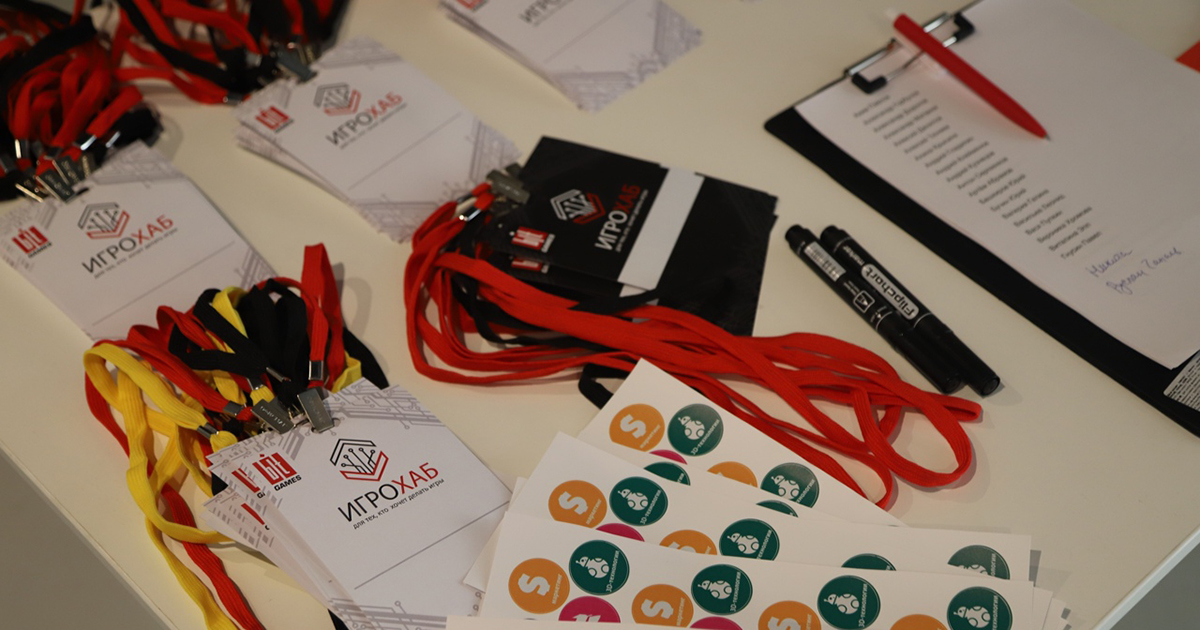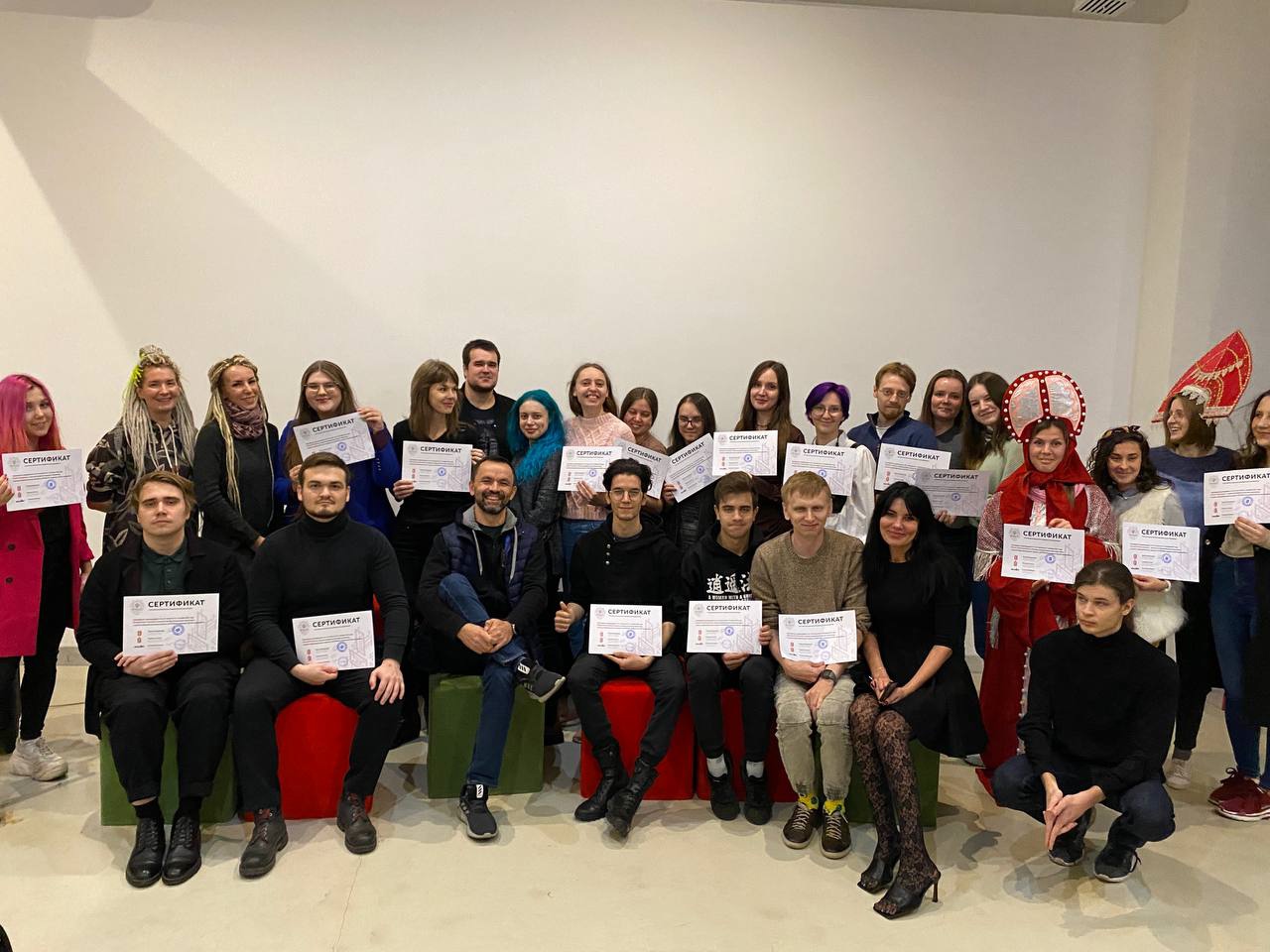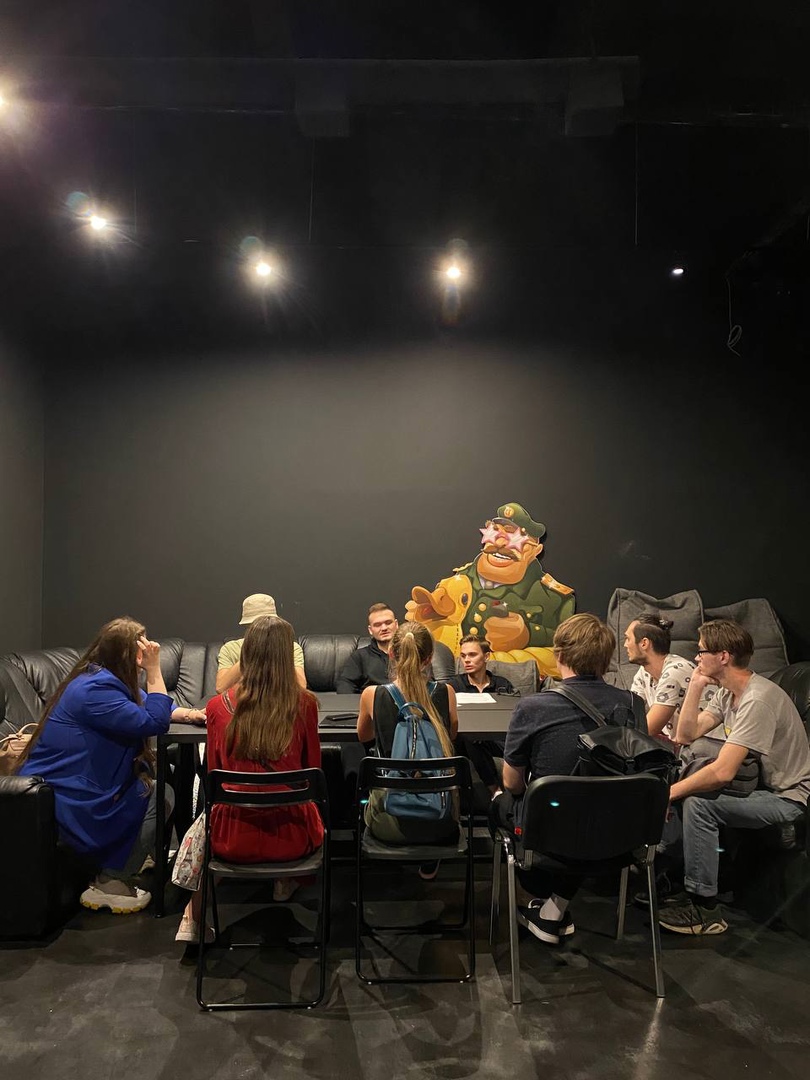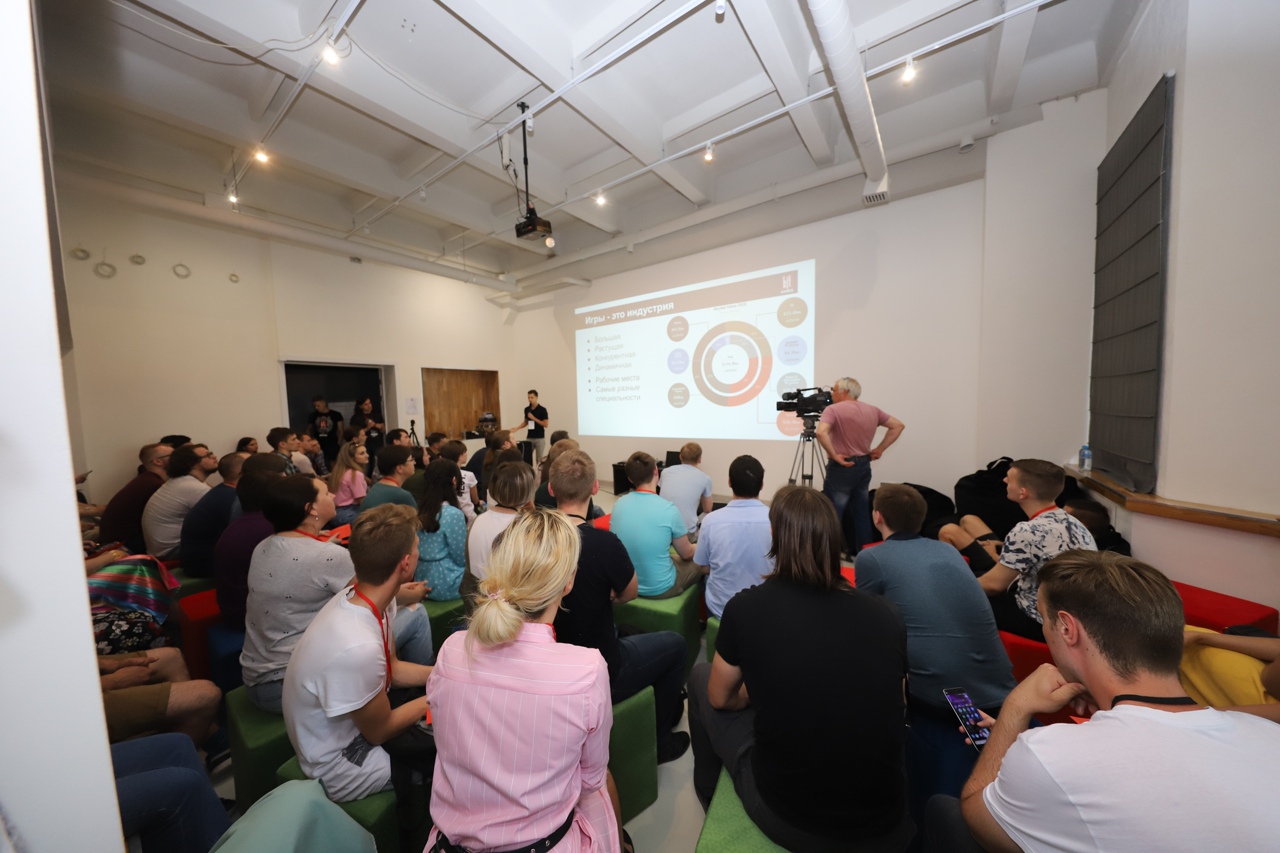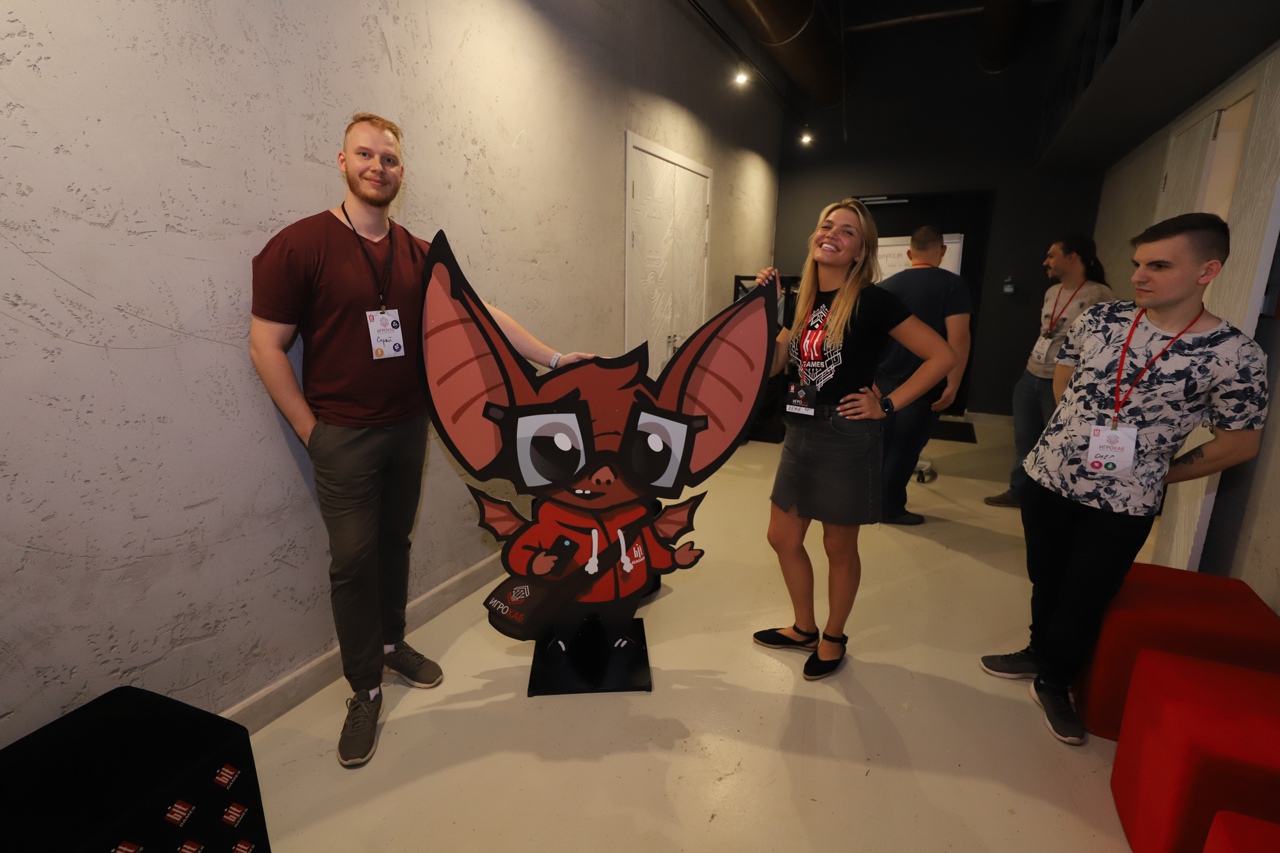BIT.GAMES told how she engaged in game dev education and closed 45% of her vacancies
Three years ago, the Penza company BIT.GAMES (part of MY.GAMES) launched the IGROHAB project for those who want to get into game dev. With his help, she finds promising newcomers and trains them. We talked with Yulia Rogozhkina, curator of educational projects and HR brand manager at BIT.GAMES, about how IGROHAB developed and its features.
Note: this project won in the nomination “The most creative project” at the event of gaming HR specialists “Game Dev HR Awards 2021”, organized by the recruiting platform Talents In Games.
Alexander Semenov, Editor-in-Chief App2Top.ru : Julia, hello! Tell me a little about yourself at the beginning. How long have you been in the industry and what do you do in BIT.GAMES?
Julia Rogozhkina
Yulia Rogozhkina, curator of educational projects and HR brand manager at BIT.GAMES: Hello! I’ve been in IT for seven years, and I joined the BIT.GAMES team in December 2018. Then, together with the HR manager, I just started working on Igrohab. Now I am responsible for education and HR brand in the company.
I love our industry dearly, so it’s not really necessary to motivate me to do something to develop it in my hometown. One has only to look at those who got here with the help of our projects and are happy in the profession, then everything is full of joy.
And how big is the HR department at BIT.GAMES?
Julia: Technically there are five of us, but in fact there are more. Two more people are involved in the strategic planning and implementation of large projects.
Are there specializations within the HR department or is every specialist in the team a universal fighter?
Yulia: We have goals and objectives that are common not only for the company, but also for the industry in the region (yes, we are already aiming here). In them we are universal fighters.
But, of course, there are specializations. They work for us:
- HR Business Partner;
- internal communication and event manager;
- educational program manager — hired just after receiving the award, we were short of hands;
- office manager;
- external consultant on organization and methodology;
- Two years ago, the co-founder and creative director joined the team, giving us momentum and scale.
It all sounds complicated and pretentious. But to put it simply, we all just really want our city to be as game—friendly as possible, and those who have talent and perseverance will get a chance to show these qualities.
Before we start talking about Igrohab, tell us about the problems facing the company in 2019. Which, in fact, pushed BIT.GAMES to launch the project.
Yulia: The first continuous problem is a shortage of personnel. There are no surprises here. Classical education is not tailored to the needs of employers. Now there is already progress in this plan, but then there was hopeless darkness. People came to us chaotically. We could spend six months or more looking for at least someone who could animate. There were no fewer tasks and the load on the main team grew.
The second continuous problem is the quality of the frames that went to flashing already inside the team, because game dev is a specific area, you know. Such flashing cost a lot of effort and resources to expensive specialists who are already overloaded.
The third continuous problem — at that time, the company was not doing well with the systematization of hiring. There was no basis — the personnel base. And without it, it became absolutely impossible to work without undermining the processes and speed of development.
The fourth problem is the overall brand awareness. BIT.GAMES are mature guys. The company was already 16 years old at that time, and it had a huge experience and great success in the industry. It’s time to stop being shy and start talking about achievements. Take responsibility for the development of game development in the region. Not only for the sake of hiring, but also just because we can.
Which jobs exactly could you not close then?
Julia: Game designer and 3D animator.
What possible solutions to the problem, in addition to launching Igrohab, did you have?
Julia: None. It was 2019, another year and a half before the pandemic, and there was no question of any remote work — they were looking exclusively in Penza. The team worked closely in the office and all work processes were honed offline.
It is now that we have adapted, and then it seemed something out of the ordinary. HeadHunter and other resources did not work for targeted responses. More time was spent on analyzing and reviewing resumes, which were sent for good luck to IT beckoning with their salaries.
This is provided that the IT community in Penza is quite developed: there is an Association of software developers, an annual major SECON conference, local events. Although we were one of the first members of the Association and helped develop it in every possible way, the specificity of game development played a role here. There were too many conditions that had to come together for us to get someone suitable in the market.
But in the end, you decided to launch IGROHAB. How did you formulate the project concept for yourself?
Julia: It was important for us to make a project that, firstly, would popularize game dev in general. He had to expand the funnel as much as possible and introduce people far from the industry to what game dev is and what opportunities there are in it. Secondly, the project had to solve the current tasks of forming a relevant personnel base and hiring.
The creation of the concept went according to science.
Setting and approving goals => collecting primary information and how others are doing there => collecting information from customers (in our case, from departments where people were needed) => analytics => finding a suitable tool.
The next stages of testing and implementation stretched over 8 months. Omitting the first two stages, I will tell you about the third. We have organized meetings with each development and art department to ask them about everything:
- what should a future specialist be able to do;
- students of which faculties can potentially be interesting (strong mathematical disciplines for analysts and game designers);
- what are the adjacent areas from which you can repurpose, (interior visualizers in 3D modelers);
- where these people live and what they are fond of. What do they read, watch, listen to on professional topics and not only;
- what soft skills should you have in order to join the teams.
After analyzing it, we realized that the original concept of creating multi-communities is not suitable. It was planned to make a community for each direction and purposefully lead them. But we would have to organize a dozen of them.
At the same time, we found out that the current employees of different specialties came to us from completely random areas: a 3D modeler studied to be a caster, there were teachers and journalists.
We realized that it would not be possible to do with little blood and search pointwise — there would be a carpet bombardment of information that game dev exists at all. In addition, full-fledged career guidance will be required, because many people who are potentially suitable for the gaming industry simply do not know about it. And if they do, they probably don’t realize that there are cool developers in Penza. So we turned everything upside down.
What format did you come to in the end?
Julia: We decided to create a single gaming hub, where people would flock and all the useful information about the game rendezvous in the city. So the name was born — “IGROHAB”. Now it includes many formats of training and interaction with the audience — the specific tool depends on the goals.
At the initial stage, we planned 7 career guidance meetups with the main goal of gathering the widest possible audience, telling about gaming professions and how everything is arranged here. There were 318 participants.
Further, training workshops were held for those already interested. We took two burning directions — art and development.
- For artists, we held 4 workshops with the development and analysis of homework on the topics: concept art, pipeline, UI + Sketch Day. The workshops were accompanied by 2 artist-curators. There were 43 participants.
- We told programmers about creating a prototype of the game. Here we also held 4 workshops, where we constantly complicated tasks. The tasks in the structure were close to typical test tasks in game development. The workshops were accompanied by 3 programmers-curators, there were 30 participants.
The final polishing took place in the format of express internships. This is a full-time working day, which the most motivated guys spent in a specific team, solving combat tasks of development and art. There were 5 approaches and 15 participants in total.
In these three stages, you can notice the descent down the funnel. From the broad career guidance part, we have reached the point express internships. So we were able to squeeze the maximum out of the covered audience and convert people:
- from those who know nothing about game development to those who know;
- from those who know about game development to those who will tightly link the industry and BIT.GAMES as the flagship;
- from those who do not understand how a related profession can give a start in game development, to those who understand;
- from understanding to practicing the necessary skills;
- from practicing beginners and students to future employees.
Having acquired a loyal audience, we could use IGROHAB already under:
- a specific vacancy. For this purpose, profile meetups were collected;
- a specific goal — for example, to probe the market and form a marketing and video production department. For this purpose, a full-fledged two-month course was developed with lectures, homework and practical training. As a result — 113 applications, 21 graduates and a full-fledged reserve of traffic managers and video makers, which we have repeatedly used in the future.
So, you have decided on a plan, understood what should work and how, and started implementing it. What turned out to be difficult at this stage, and what, on the contrary, did not cause problems?
Yulia: The very first stage was difficult, where we had to work with objections and skepticism about the project. Wouldn’t it be a waste of time? And will it close the burning vacancy? And if we teach him, and he leaves? These are logical questions and we tried to answer them logically. It always happens when you do something for the first time.
Otherwise, there were no problems. We had an amazing team and confidence that this city is waiting for its heroes.
How seriously did the initiative load the HR department, as well as directly those specialists who acted as teachers and experts?
Yulia: At the first stages, we did the “IGROHAB” three of us: me, the HR manager and the event manager. After that, an office manager joined us. We already had the experience of organizing meetups, so everything was coordinated. The active part of the guys, who loved to perform and share knowledge, supported us very timely. It was important for us to start, get the first results and move on with them.
And everything worked out. Already at the first career guidance stage, we successfully hired several people. Seeing that IGROHAB was working, potential speakers reached out to us themselves.
For each “order” for a candidate, we selected the most relevant format. We found two game designers, whom we had been looking for for years before, with the help of an open test from the audience gathered by the project.
The burden on the experts, it seems to us, was pleasant to them, because we did not force anyone. We tried to close all organizational issues to the maximum, so that the speakers could only speak and have fun.
What results did this lead to in the first year?
Yulia: During the 8 months of the project’s work up to the pandemic, we were able to gather an audience of 500 participants and hire 12 employees for complex and specific vacancies. For a team of 80 people, this figure is impressive.
Some participants did not suspect before that they needed to go to a game show. For example:
- an employee of the Ministry of Internal Affairs became a technical artist;
- A 3D artist who draws fences in a state—owned company is a 3D character modeler;
- instrument engineering college student — video designer;
- website developer in a little-known web studio — Go developer;
- a student translator is a game designer.
A year has passed. The company was satisfied with the experience, but new circumstances appeared that forced a change in the format of the initiative. Will you tell me about these circumstances?
Yulia: There is one circumstance for everyone — a pandemic. We went to the remote, more or less adapted and began to decide how to adapt the formats of Igrohab. No one canceled the original tasks for which it was created. Plus, the hiring structure has changed: we started hiring not only in the office, but also for remote work.
In the end, what did they decide to change in the concept and format of Igrohab?
Yulia: After the first year, we realized that we needed more practice. We have combined the theoretical part with lectures/reports and variations of practical intensive courses into a single project work. Participants gathered in teams in the format of a combat game studio: programmers, game designers, 2D/3D artists and animators. Or we collected them for a specific task. Such formats became known as Academies.
Interesting. Tell me, how did everything go in the end?
Yulia: The Academy of Hyper—Casual Games was the first to launch – a month before the pandemic, in February 2020. The participants had to create the closest possible clone of the famous game. Just as artists learned to draw by copying great canvases, so here the guys learned to make games by copying successful projects.
Even before the pandemic, we managed to hold 3 inspiring meetups from the creative director about the history and process of creating games. This is how we gained the second wave of aspiring gamedev in Penza. Interviews were conducted with those who passed the initial selection at the time of team compatibility and motivation. After that, we formed 4 teams of game designers, developers, 2D/3D artists, with whom expert curators have been working online for two months.
There were 19 participants, 4 curators and 4 created games. 5 people were hired.
Then there was the “Academy of Game Art”. By September, we finally got used to the online and swung at a large scale. The willingness to hire remote workers and the processes established by that time in this part gave us the opportunity to roll out the capabilities of Igrohab not only to our city, but also to the entire Russian-speaking audience.
In addition to hiring, we decided to kill another task. Studio games that did not reach production were taken as basic ideas for working out the art. That’s how we planned to revive them.
Having collected 76 applications, we conducted an initial selection. Then interviews and the formation of teams. There were 5 of them in total.
There were 37 participants from 6 cities, 5 curators, 5 rendered games. 9 people were hired.
Relative to the first year, did it take more effort and cost to conduct?
Yulia: On the contrary, financial investments decreased: there was no need to spend money on water in the audience (I’m kidding). It was our own online regrouping that cost more effort.
What results have you achieved in the second year?
Yulia: For us, the biggest result was that IGROHAB was still alive and brings new employees — 14 people. It was a difficult environment for everyone, but we were able to adapt.
In conclusion, will you share what will happen next?
Yulia: That year we had a large—scale semi-annual “Game Development Academy” in a hybrid format: part of the work and meetings were in the office, part was online. During this time, we alternately trained game designers, programmers, 2D/3D artists, animators and VFX. The mechanics are the same — 4 blanks of the game, educational intensive courses, practice with curators, demo days and defenses. The final was a two-day hackathon.
As a result, 12 people were hired and managed to use the forces of former participants (those who were once green and beginners) to make a career-oriented simulator on the topic of the gaming industry for schoolchildren within the framework of the “Lesson of Numbers” project. Now he has more than 3 million passes.
The format of the project activity turned out to be effective and interesting. We plan to develop it. We are currently working on automating some stages of the work. For example, to record basic introductory lectures in all directions, so as not to pull the guys to tell the same thing in a new circle.
A large block of work on expanding the audience has also been added. Two and a half years later, a clear understanding came that the audience that was once gathered had already exhausted itself, we had already burned it out pretty well. 45% of the people accepted during this time are members of the Igrohab.
Therefore, we will go to the fields and in the near future we will become game dev preachers in universities, colleges and schools. We make inspiring presentations and negotiate with administrations.
We also have a big task to launch additional education courses at local universities, but so far only for developers. The fact that the guys will feel the same Unity for at least six months will give us even more opportunities for their further training.
In general, by any means we will continue to lure talents into our game dev funnel. We fucking love it!
